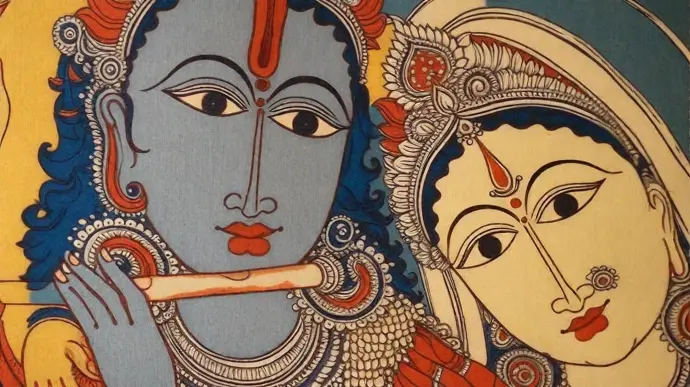Rich Legacy of Kalamkari

Kalamkari is a traditional Indian art form that involves hand-painting or block-printing intricate designs on fabric, primarily cotton and silk. It has a rich history that spans several centuries, and over time, it has evolved to include various styles and techniques. Here is an overview of the evolution and history of Kalamkari painting and Kalamkari sarees:
Ancient Roots (Ancient to Medieval Periods): Kalamkari has its roots in ancient India, dating back to over 3000 years. The word “Kalamkari” is derived from two Persian words, “kalam” (pen) and “kari” (craftsmanship), highlighting the use of pens or brushes in this art form. In its earliest form, Kalamkari was primarily practiced in the regions of Andhra Pradesh and Telangana.
Two Distinct Styles: – Srikalahasti Style: This style of Kalamkari is known for its intricate freehand drawing and the use of natural dyes. It often features mythological and religious motifs. – Machilipatnam Style: Also called “Masulipatnam Kalamkari,” this style involves block printing intricate patterns and then hand-painting finer details. It often features floral and Persian-inspired motifs.
Use in Clothing: Kalamkari was initially used to adorn temple hangings, deities’ attire, and scrolls, but over time, it found its way into clothing. Sarees, in particular, became popular canvas for Kalamkari artists due to the large surface area they provided for intricate designs.
Evolution with Trade and Colonial Influence (17th Century – 19th Century): The coastal town of Machilipatnam (Masulipatnam) became a prominent center for Kalamkari production and trade. The art form saw significant evolution and influences from European colonial powers such as the Dutch, British, and Portuguese during this period. European traders sought Kalamkari textiles for their exotic appeal, and this led to the incorporation of European motifs and colors into Kalamkari designs.
Decline and Revival (Late 19th Century – 20th Century): Kalamkari faced a decline in popularity during the 19th century due to industrialization and the availability of cheaper machine-made textiles. However, efforts by artists and revivalists in the early 20th century helped revive interest in Kalamkari. They worked to preserve traditional techniques, motifs, and natural dye methods.
Contemporary Kalamkari Sarees: In the modern era, Kalamkari sarees have become highly sought after for their unique blend of tradition and contemporary fashion. They feature a wide range of designs, from traditional motifs to innovative, fusion-inspired patterns. While traditional natural dyes are still used, some contemporary Kalamkari artists also experiment with synthetic dyes to achieve a broader color palette.
Global Appeal: Kalamkari sarees and fabrics have gained popularity not only in India but also on the international fashion scene. They are cherished for their handcrafted beauty and cultural significance.
